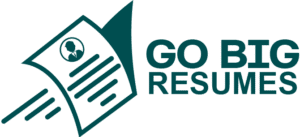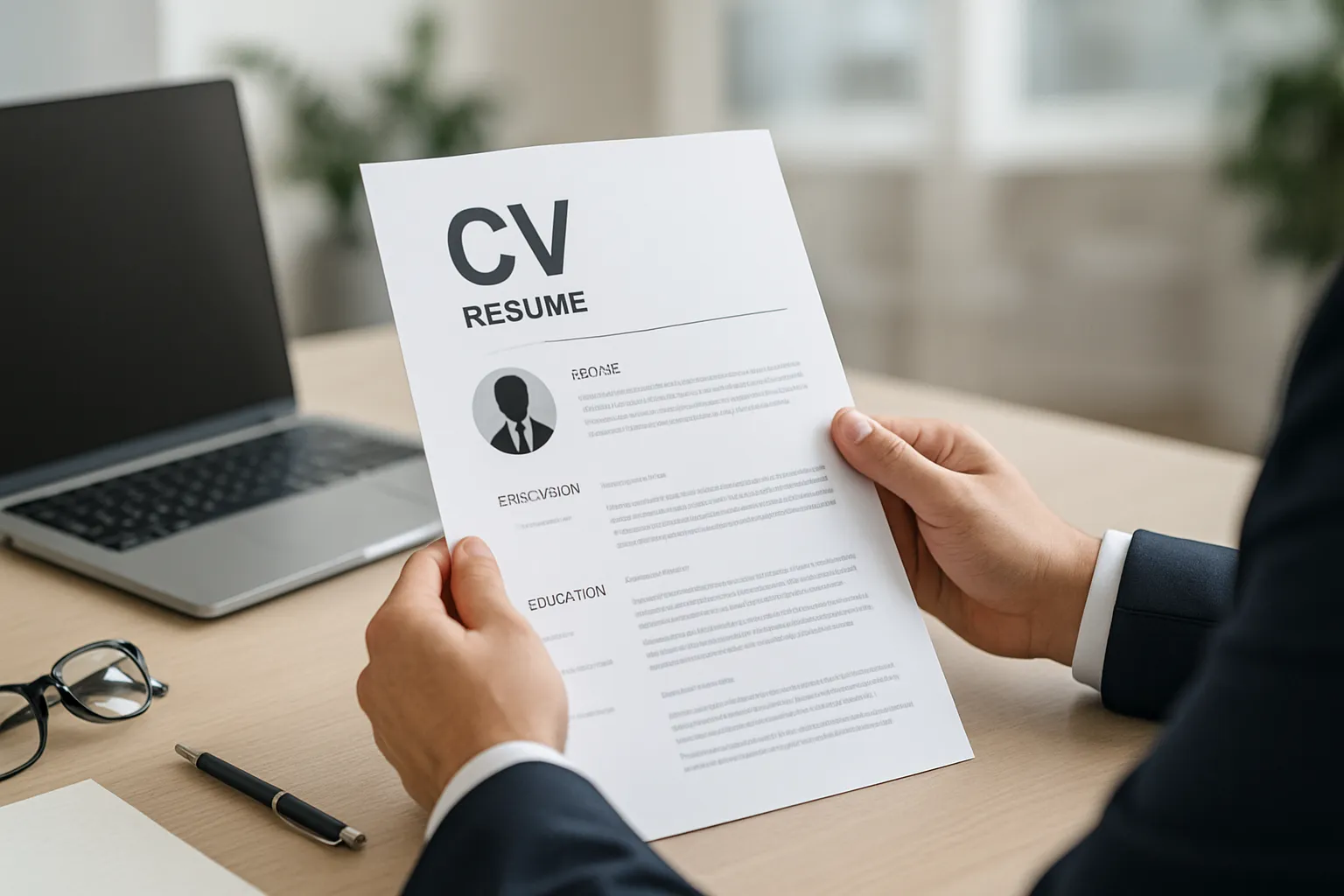Changing careers can be an exciting yet daunting journey. Whether you’re shifting industries, upskilling, or venturing into new territories, your resume is the key document that bridges your past experience with your future ambitions. Crafting a compelling resume tailored specifically for career change requires a strategic approach, focusing on transferable skills, appropriate formats, and persuasive content. This comprehensive guide explores essential resume tips for career changes, offering detailed insights into creating resumes that stand out in a competitive job market, along with effective templates and real-world examples.
Understanding the Importance of a Tailored Resume in Career Transitions
When embarking on a career shift, it’s critical to recognize that your resume must serve as the bridge connecting your previous work experience with your new professional goals. A tailored resume acts as a powerful marketing tool, spotlighting your transferable skills and demonstrating your potential value to prospective employers in a different industry. Without customization, even the most impressive work history can appear irrelevant or disconnected.
A well-crafted resume for a career change doesn’t just list your previous roles; it strategically highlights competencies, achievements, and qualifications aligned with your target industry. Employers often look for evidence of adaptability, continuous learning, and relevant skills, making it crucial to craft a document that clearly communicates these attributes.
Furthermore, a tailored resume showcases your understanding of the new industry’s expectations and terminology, which significantly enhances your chances of passing applicant tracking systems (ATS) scans and catching the eye of hiring managers. Understanding these nuances can make your application more relevant, increasing your chances of landing interviews and successfully transitioning into a new career.
The Role of a Resume in Career Change
The significance of a resume during a career transition cannot be overstated. It essentially acts as a personal marketing brochure that introduces you to potential employers, emphasizing why you are a suitable candidate despite a non-linear career path.
Your resume should serve as a narrative that effectively communicates your motivation to switch careers, your relevant competencies, and your commitment to the new field. It’s not enough to merely list your experiences; you need to tell a story that demonstrates your readiness and enthusiasm for this new chapter.
In addition, a resume tailored for career change helps mitigate concerns that employers may have about your lack of direct experience. By emphasizing transferable skills such as leadership, communication, problem-solving, and adaptability, you can position yourself as a valuable asset capable of thriving in a different environment.
Moreover, a strategic resume can open doors to opportunities that otherwise might overlook candidates without conventional backgrounds in the industry. It’s about positioning yourself not just as someone qualified but as someone eager and prepared to contribute meaningfully to the new organization.
Key Components of a Resume for Career Changes
Creating a successful resume for a career change involves carefully structuring each section to maximize impact. The core components include contact information, a compelling summary or objective, a skills section, work experience, education, and additional certifications or professional development.
Contact Information: Start with your full name, phone number, email address, and LinkedIn profile. Ensure your contact details reflect professionalism, as they set the first impression.
Summary or Objective: This is your elevator pitch tailored to highlight your career change motivation, transferable skills, and aspirations. Use this space to instantly communicate your value proposition relevant to the new industry.
Skills Section: Create a dedicated segment highlighting technical and soft skills that are applicable across industries. This helps ATS systems recognize keywords and shows recruiters your competencies at a glance.
Work Experience: Focus on achievements and capabilities rather than job titles. Use functional descriptions emphasizing transferable skills and accomplishments relevant to the targeted role. For example, project management, client relations, or process optimization.
Education and Certifications: Include relevant degrees, certifications, and ongoing professional development courses that bolster your suitability for the new career. This demonstrates your commitment to learning and growth.
Additional Sections: Add any volunteer activities, memberships, or side projects that showcase relevant skills or interests related to the industry shift.
A clean, professional format with consistent fonts, clear headings, and plenty of white space greatly enhances readability and makes your resume easy to scan. Remember, simplicity combined with strategic content placement is often more effective than overly complex designs.

Highlighting Transferable Skills in Your Resume for Career Change
One of the most critical aspects of resume writing for a career shift is demonstrating transferable skills those abilities gained through various roles that are applicable in different contexts. These skills act as the bridge connecting your past experiences to your future responsibilities.
Identifying Skills That Cross Industries
Transferable skills are often intangible but highly valued. Examples include communication, teamwork, problem-solving, leadership, time management, adaptability, and technological proficiency.
Begin by analyzing the job descriptions in your target industry. Look for common skills and requirements, then map your existing skills to those needs. For instance, if transitioning from retail to project management, emphasize your experience in customer service, conflict resolution, or team coordination.
Complement this with a skills audit, listing all relevant competencies acquired through previous roles, education, and life experiences. Then, categorize them into hard skills (technical knowledge, certifications) and soft skills (interpersonal abilities, resilience).
Demonstrating Competencies Through Examples
It’s not enough to list skills; you need to demonstrate them with concrete examples. Use the STAR method (Situation, Task, Action, Result) to craft achievement-oriented bullet points that prove your capabilities.
For example: “Led a team of five during a product launch, coordinating cross-departmental efforts that resulted in a 20% increase in sales within three months.”
This demonstrates leadership, project management, and results orientation all transferable skills. When applying for roles in a new industry, tailor these examples to highlight relevant skills, even if the context differs.
Emphasizing Soft Skills and Professional Qualities
Soft skills often distinguish candidates when technical experience is limited. Showcasing qualities like resilience, curiosity, and willingness to learn can reassure employers of your adaptability. Incorporate these traits into your resume’s profile and experience sections, and support them with real-life examples.
Additionally, consider including a ‘Key Highlights’ or ‘Core Competencies’ section near the top. This quickly summarizes your strengths, aligning them with what your prospective employer values most.
Balancing Technical and Transferable Skills
While soft skills are vital, don’t neglect technical competencies. If you’ve completed relevant courses or earned certifications, feature them prominently. This combination creates a balanced picture of your capability to perform well in your new career.
In conclusion, highlighting transferable skills demands strategic thinking and storytelling finesse. By proactively identifying, demonstrating, and aligning these skills with your target role, you significantly boost your chances of convincing hiring managers that you’re ready for the next chapter.
Choosing the Right Resume Format for a Career Change
Selecting an appropriate resume format is crucial for effectively presenting your background and facilitating a successful career transition. Not all formats suit career changers equally; therefore, understanding the advantages and disadvantages of each is essential.
Functional vs. Chronological: Which Is Better for a Career Change?
The traditional chronological resume lists work experiences in reverse order, emphasizing career progression and tenure. While this format is popular, it may highlight gaps or unrelated experiences, potentially raising red flags for employers assessing a career switch.
Conversely, a functional resume focuses on skills and competencies, grouping them by categories rather than job titles. This format draws attention away from employment chronology and toward what you can do, making it ideal for career changers with diverse backgrounds or gaps.
However, some recruiters view functional resumes skeptically because they can mask employment gaps or lack clear career progression. Therefore, it’s often advisable to combine both approaches.
When to Use a Combination Resume Format
The combination or hybrid resume merges elements of both chronological and functional formats. It begins with a skills summary or profile, followed by a detailed employment history presented chronologically.
This format allows you to showcase relevant skills upfront, addressing potential employer concerns about unrelated work history, while still providing context about your career trajectory.
For example, a career changer with significant transferable skills but limited directly relevant experience can benefit from a combination resume. It highlights their abilities while maintaining transparency about their employment history.
Structuring Your Chosen Resume Format Effectively
Whichever format you select, clarity and consistency are paramount. Use clear headings, bullet points, and ample spacing to improve readability. Prioritize sections that emphasize your strengths, such as a compelling summary or skills profile at the top.
If opting for a functional or hybrid format, ensure you incorporate specific examples and quantifiable achievements under each skill category. This approach strengthens your narrative and provides tangible proof of your capabilities.
Adapting Resume Formats for Different Industries
Different industries may have preferred resume styles. Creative fields might accept more visually dynamic formats, while corporate sectors often favor clean, straightforward layouts. Conduct research into the standard practices within your target industry to align your resume style accordingly.
Remember, the goal is to present your qualifications in the clearest, most persuasive manner possible, emphasizing how your unique background aligns with the needs of the new industry.

Crafting a Compelling Resume Summary or Objective for a Career Transition
Your resume summary or objective is arguably the most vital part of your document, capturing the recruiter’s attention within seconds. For career changers, these statements must communicate your enthusiasm, relevant skills, and readiness for the new role succinctly and persuasively.
Differentiating Between Resume Summaries and Objectives
A resume summary provides a snapshot of your professional background, highlighting key skills, accomplishments, and your value proposition. It’s ideal for experienced professionals or those with a solid track record in related fields.
A resume objective, on the other hand, focuses on your career goals and what you aim to achieve in the new role. It’s especially useful for entry-level candidates, career changers, or those re-entering the workforce.
For career changers, a well-crafted summary emphasizes transferable skills and enthusiasm, whereas objectives should clearly state your intent to transition and how your background aligns with the new role.
Crafting Powerful Resume Objectives
“Aspiring software developer with a background in graphic design, passionate about creating user-centric applications, and eager to apply creative problem-solving skills learned through self-directed coding courses.”
“Motivated educator transitioning to corporate training, bringing excellent communication and curriculum development abilities to facilitate engaging learning experiences in a new industry.”
Objectives should be concise, highlighting your career pivot and how your existing skills translate into value for the employer.
Tips for Writing Effective Summaries and Objectives
- Start with a strong statement of your professional identity or career goal.
- Highlight your most relevant skills, accomplishments, or certifications.
- Tailor each statement to match the specific job description.
- Use industry-specific keywords to optimize for ATS scans.
- Keep it brief aim for 3-4 sentences that pack a punch.
By crafting a compelling summary or objective, you immediately position yourself as a motivated, capable candidate, setting the tone for the rest of your resume.
Practical Tips for Writing Your Resume During a Career Transition
Transitioning careers requires strategic planning and precise execution in your resume. This section offers practical tips to help you craft an effective document that resonates with hiring managers and ATS algorithms alike.
Researching Your Target Industry
Understanding industry-specific expectations, jargon, and skill requirements is foundational to tailoring your resume. Dive deep into job postings, industry reports, online forums, and professional networks to grasp what employers seek.
Identify keywords, required competencies, and emerging trends to align your language. For example, if moving into digital marketing, familiarize yourself with terms like SEO, PPC, or analytics tools, incorporating them naturally into your resume.
This research not only informs your content but also demonstrates your genuine interest and initiative, which employers value highly.
Building a Strong Employment History Section
For career changers, this section is where you bridge the gap between past roles and future aspirations. Focus on achievements and responsibilities that highlight transferable skills, such as leadership, problem-solving, project management, or communication.
Use action verbs and quantify results wherever possible. For instance: “Directed cross-functional teams to streamline operations, reducing costs by 15%,” illustrating leadership and efficiency.
Formatting tips include using clear headings, consistent date ranges, and bullet points for readability. Consider grouping related experiences or creating subsections for freelance or volunteer work that supports your new career.
Utilizing Professional Development Opportunities
Continuously investing in learning signals commitment and adaptability. Include relevant certifications, online courses, workshops, or seminars that bolster your qualifications.
Highlight ongoing professional development efforts, such as earning a certification in data analysis or completing a workshop on Agile methodologies. These demonstrate you’re proactive in acquiring industry-relevant skills and staying current.
In your resume, position this information prominently, perhaps in a dedicated section labeled ‘Professional Development’ or embedded within your education.
Crafting an Engaging Cover Letter
A tailored cover letter complements your resume, allowing you to narrate your career transition story. Address potential employer concerns directly, such as lack of direct experience, by explaining your motivations, transferable skills, and readiness to learn.
Use the cover letter to expand on how your background uniquely positions you to contribute. For example, highlight cross-industry projects, volunteer initiatives, or side projects aligned with your target role.
Personalization is key; avoid generic templates. A well-written cover letter can tip the scales in your favor and reinforce your fit for the new role.
Leveraging Resume Writing Services
Professional resume writers specialize in creating documents that effectively communicate your strengths during a career shift. They understand industry nuances, ATS optimization, and compelling storytelling techniques.
Using a reputable resume writing service can save time, reduce stress, and significantly enhance your application quality. When choosing a service, look for reviews, samples of their work, and ensure they understand your career goals.
Investing in professional help can be especially worthwhile if you’re unsure how to best frame your experience or if time constraints limit your ability to craft an optimal resume independently.
Examples and Templates for Career Change Resumes
Having the right template and visual structure is vital for making your resume appealing and easy to navigate. This section provides insights into designing effective career change resumes, supported by real-life examples and templates.
Resume Templates Specifically Designed for Career Changers
Templates tailored for career transitions focus on flexibility and clarity. They emphasize key skills, achievements, and potential rather than just a linear progression.
Features to look for include:
- Clear headings and sections for skills and experience
- Space for a professional summary highlighting your career goals
- Functional or hybrid layout options
- Visual cues like icons or color accents sparingly used to guide the reader
Most modern resume templates are adaptable. Choose one that aligns with your personality and industry standards, then customize it to reflect your unique story.
Use standard headings like “Work Experience,” “Skills,” and “Education.”
Incorporate keywords from the job description naturally within your content.
Avoid graphics, complex tables, or unusual fonts that ATS may misinterpret.
Save your resume in compatible formats like PDF or Word documents as specified by the employer.
Testing your resume with ATS simulators or parsing tools can help identify issues before submission. The goal is to balance visual appeal for human reviewers with machine readability.
Real-life Resume Examples for Different Career Changes
To illustrate, here are summarized examples of resumes from individuals who transitioned successfully:
- A marketing professional moving into data analysis used a combination format showcasing analytical skills upfront, with a minimal emphasis on unrelated marketing roles.
- An administrative assistant shifting into event planning highlighted organizational skills, client interaction, and project execution with targeted achievements.
- A teacher transitioning into corporate training emphasized curriculum development, presentation skills, and capacity building through specific examples.
Analyzing such examples reveals the importance of tailoring content, emphasizing relevant competencies, and choosing an appropriate format to portray your potential effectively.
Spotlight on Functional Resume Examples
Functional resumes de-emphasize chronology and focus instead on skills and accomplishments. They’re particularly advantageous for career changers who want to foreground their capabilities rather than their work history.
For instance, a functional resume for a software developer pivoting from graphic design might organize sections around skills such as UI/UX design, coding languages, and project management, supported by relevant achievements.
Effective functional resumes use descriptive sub-headings, clear bullet points, and quantifiable results to build a compelling narrative around core competencies.
Crafting a Personal Brand Through Your Resume
Your resume is a reflection of your personal brand. Consistent messaging regarding your skills, values, and professional identity helps differentiate you from other candidates.
Incorporate your personal mission statement, core values, or professional philosophy subtly throughout your resume. Use a cohesive tone, professional language, and a style aligned with your desired industry.
Tools like personal branding statements or taglines positioned prominently can reinforce your uniqueness and leave a lasting impression.

Conclusion
Successfully navigating a career change hinges on a meticulously crafted resume that emphasizes transferable skills, employs the right format, and tells your unique story compellingly. Tailoring each section from professional summaries to experience descriptions and utilizing innovative templates can elevate your application. With strategic keyword integration, demonstrative achievements, and professional presentation, your resume becomes a powerful tool to unlock new opportunities. Remember, a well-designed resume paired with a personalized cover letter amplifies your message and significantly boosts your chances of making a seamless career transition into a thriving new industry.
FAQS
A combination resume format is often ideal. It allows you to highlight transferable skills first, followed by relevant work experience.
You can also use a functional resume format, which emphasizes skills over work history, particularly if you have limited experience in the new field.
A chronological resume is still an option, but you might need to adjust it to showcase the most relevant experiences first
Identify skills: from your previous experience that are relevant to your new career.
Use action verbs: to describe your achievements and responsibilities, emphasizing how you used those skills.
Create a "Skills" section: or integrate skills into your summary or experience descriptions.
Examples: If transitioning from a marketing role to project management, highlight skills like project planning, communication, and problem-solving.
Include a resume summary or objective: Briefly explain your career goals and how your skills and experience align with the new role.
Tailor your resume to each job: Highlight the most relevant skills and experiences for each specific position.
Consider a cover letter: This can provide more context for your career change and explain your motivation
Focus on transferable skills: Emphasize how your past experience has equipped you with valuable abilities.
Include certifications, courses, or training: Show your commitment to learning in your new field.
Highlight any relevant projects or volunteer work: Even if not paid, these experiences can demonstrate your skills and enthusiasm
Be honest and upfront: Avoid hiding or attempting to justify gaps unless they are truly problematic.
Explain the gaps in your cover letter: Provide context for your previous employment and highlight any positive outcomes from those periods.
Focus on what you've learned and how you've grown: Show that you're still developing and adapting to new challenges.
Services
Subscribe to our newsletter
© 2025 Go Big Resumes powered by inceptasquare.com



